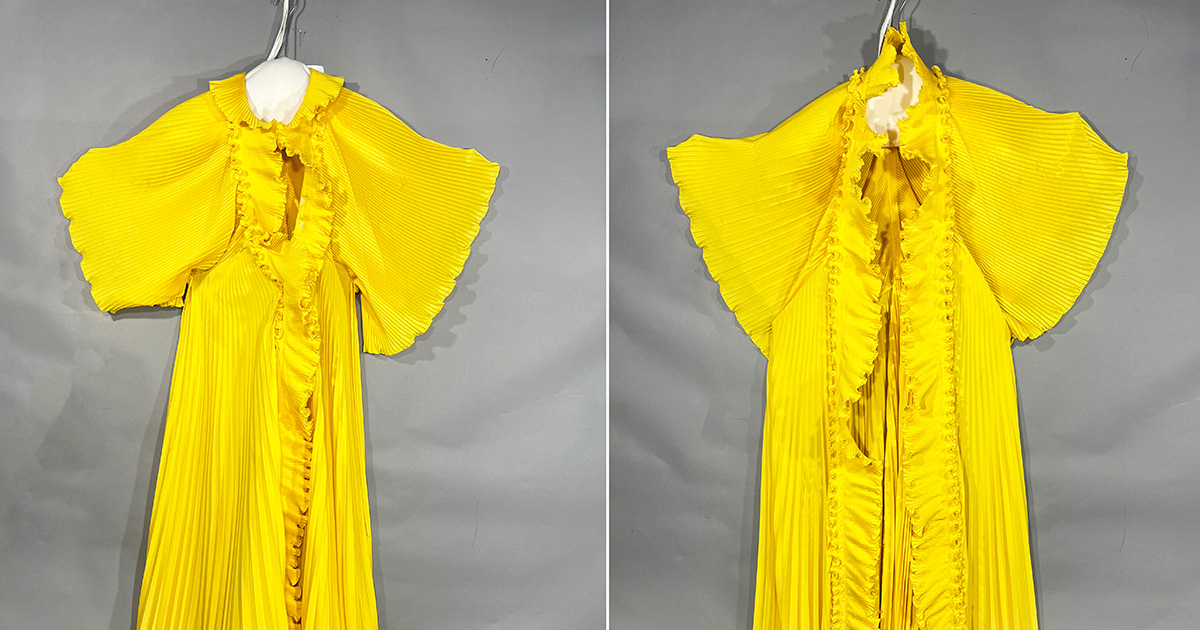- Events & Programs Home
- Calendar
- Accessibility
- Adults
-
Families & Teens
- Families & Teens Home
- 10x10 Teen Art Expo
- Art on the Rise
- Art Together: Art Making for Families with Children Ages 3–5
- Babies Sing with May Festival Minis
- Boy Scouts / Girl Scouts
- CAM Kids Day
- Family Storytime and Gallery Walk
- Family Studio: Art Making for Families with Children Ages 6–12
- Games in the Galleries
- Members-Only Baby Tours
- Public Baby Tours
- REC Reads
- Rosenthal Education Center (REC)
- Saturday Morning Art Class
- See Play Learn Kits
- Summer Camp
- Teen Fest: Zine and Comic Exchange
- RECreate
- Teachers
- Community Outreach
- Fundraisers
- Plan Your Own Event

- Events & Programs Home
- Calendar
- Accessibility
- Adults
-
Families & Teens
- Families & Teens Home
- 10x10 Teen Art Expo
- Art on the Rise
- Art Together: Art Making for Families with Children Ages 3–5
- Babies Sing with May Festival Minis
- Boy Scouts / Girl Scouts
- CAM Kids Day
- Family Storytime and Gallery Walk
- Family Studio: Art Making for Families with Children Ages 6–12
- Games in the Galleries
- Members-Only Baby Tours
- Public Baby Tours
- REC Reads
- Rosenthal Education Center (REC)
- Saturday Morning Art Class
- See Play Learn Kits
- Summer Camp
- Teen Fest: Zine and Comic Exchange
- RECreate
- Teachers
- Community Outreach
- Fundraisers
- Plan Your Own Event
Blog: CAM Uncovered
Blog: CAM Uncovered
- Home
- Plan Your Visit
- Art
-
Events & Programs
- Events & Programs Home
- Calendar
- Accessibility
- Adults
-
Families & Teens
- Families & Teens Home
- 10x10 Teen Art Expo
- Art on the Rise
- Art Together: Art Making for Families with Children Ages 3–5
- Babies Sing with May Festival Minis
- Boy Scouts / Girl Scouts
- CAM Kids Day
- Family Storytime and Gallery Walk
- Family Studio: Art Making for Families with Children Ages 6–12
- Games in the Galleries
- Members-Only Baby Tours
- Public Baby Tours
- REC Reads
- Rosenthal Education Center (REC)
- Saturday Morning Art Class
- See Play Learn Kits
- Summer Camp
- Teen Fest: Zine and Comic Exchange
- RECreate
- Teachers
- Community Outreach
- Fundraisers
- Plan Your Own Event
- Give & Join
- About
- Tickets
- Calendar
- Exhibitions
- Collections
- Blog
- Shop
Behind the Scenes in Conversation: New seats, never been sat!
by C. Obie Linn, Conservator of Textiles
6/20/2024
textile conservation , CAMConservation , historic upholstery , colonial dames , colonial furniture
It was time for the ladderback chairs in Gallery 218 to get a refresh! The chairs’ silk upholstery wasn’t original and over the years, while on display, the fabric had grown dingy and stained. Curator of Decorative Arts & Design Amy Dehan selected some appropriate, modern fabric in consultation with me, and I recovered the seats!
The wooden seat boxes sit in their seat frames snugly but could be removed for treatment. In the lab, I pried out the upholstery tacks on the underside to release the old covers. Located underneath the upholstered covers and a layer of cotton batting, canvas protected the rest of the seat structures, so the overall shape was undisturbed by the cover refresh.
I cut new fabric covers to fit the seats and used pushpins to temporarily secure them to the frames to get the alignment and tension just right. There were old chalk marks on the wooden frames, left by a previous upholsterer who—just like me—was working to get the cover centered correctly on the seat. I reused my predecessor’s marks and didn’t have to make new ones.
When the new covers were situated perfectly, I used an electric stapler to secure them to the frame. The stapler is easier for me to use than upholstery tacks, and there won’t be any question in the future that this is a modern intervention to these chairs. I then took the recovered seats back to the gallery and reunited them with the chair frames, fitting them snugly in the seat tray.
The new upholstery is so clean and fresh, but still period-appropriate (of course!) I can also attest the new upholstery has never been sat on! Being museum objects, they should never be used as functional chairs. Is a seat still a seat if it’s never been sat? We’ll have to leave that one to the philosophers.

Figure 1: One of the chairs before treatment. This seat cover has some stains and other damage. Time for a refresh!
Slat-back chairs, circa 1760–1775, Philadelphia US, mahogany wood, reproduction upholstery, Lent by the National Society of the Colonial Dames of America in the State of Ohio, L86-87.1959
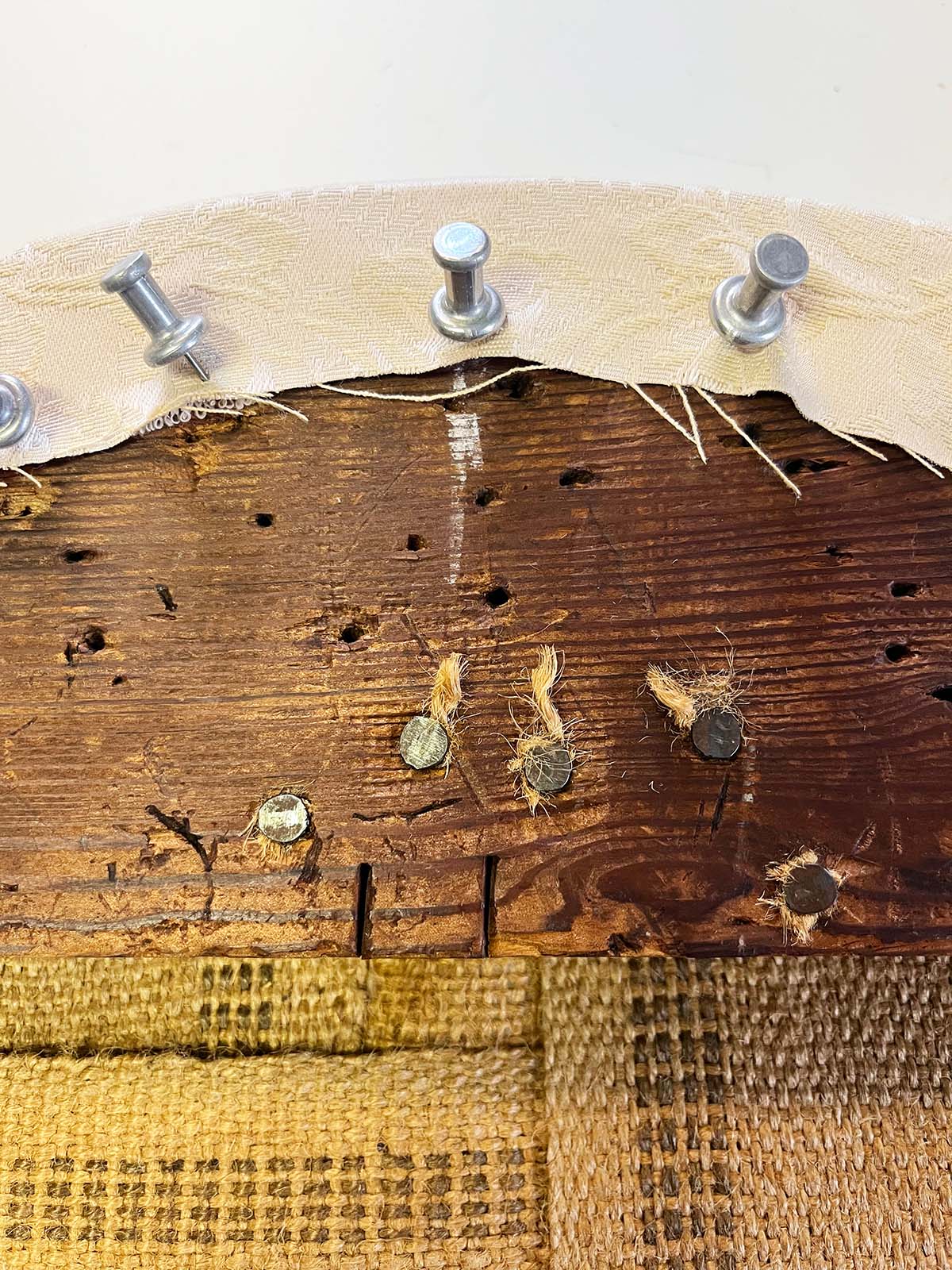
Figure 2: The underside of one of the chairs during treatment. Thumbtacks were used to hold the new cover in position. An old chalk mark from a previous upholsterer is put to work again!
Slat-back chairs, circa 1760–1775, Philadelphia US, mahogany wood, reproduction upholstery, Lent by the National Society of the Colonial Dames of America in the State of Ohio, L86-87.1959
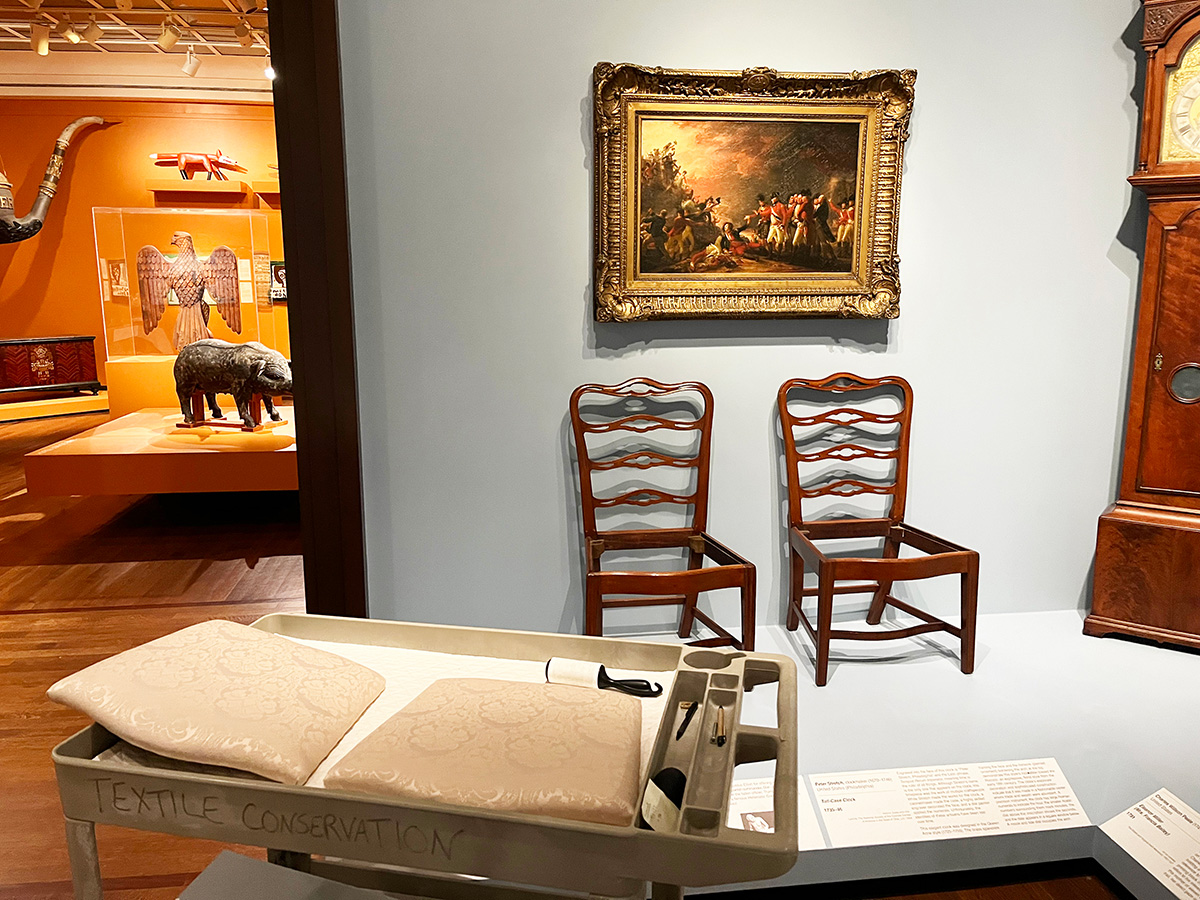
Figure 3: Newly covered seats arrive in the gallery, ready to be reunited with their chair frames.
Slat-back chairs, circa 1760–1775, Philadelphia US, mahogany wood, reproduction upholstery, Lent by the National Society of the Colonial Dames of America in the State of Ohio, L86-87.1959
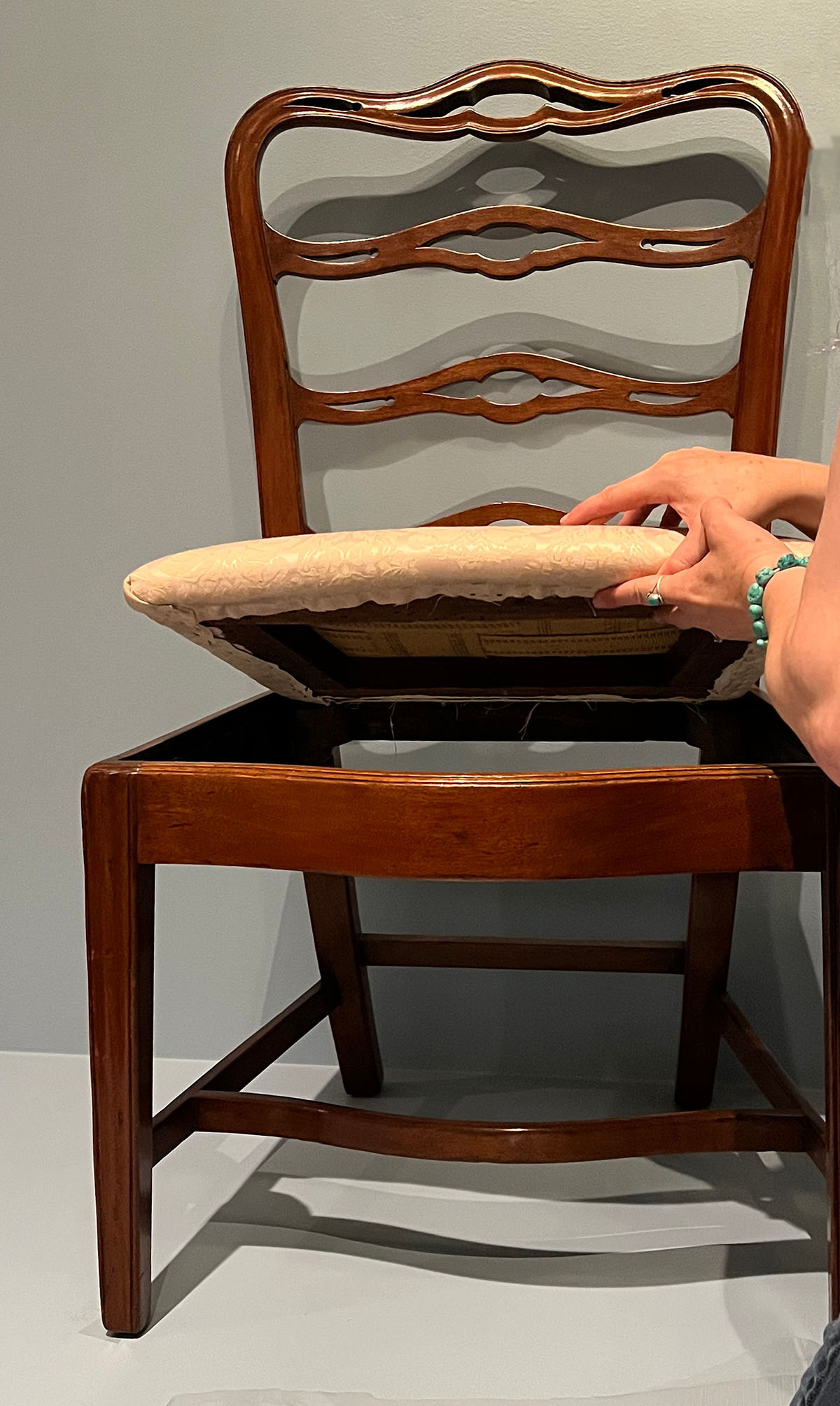
Figure 4: Fitting the newly covered seat into the frame! It settles into the chair frame neatly.
Slat-back chairs, circa 1760–1775, Philadelphia US, mahogany wood, reproduction upholstery, Lent by the National Society of the Colonial Dames of America in the State of Ohio, L86-87.1959
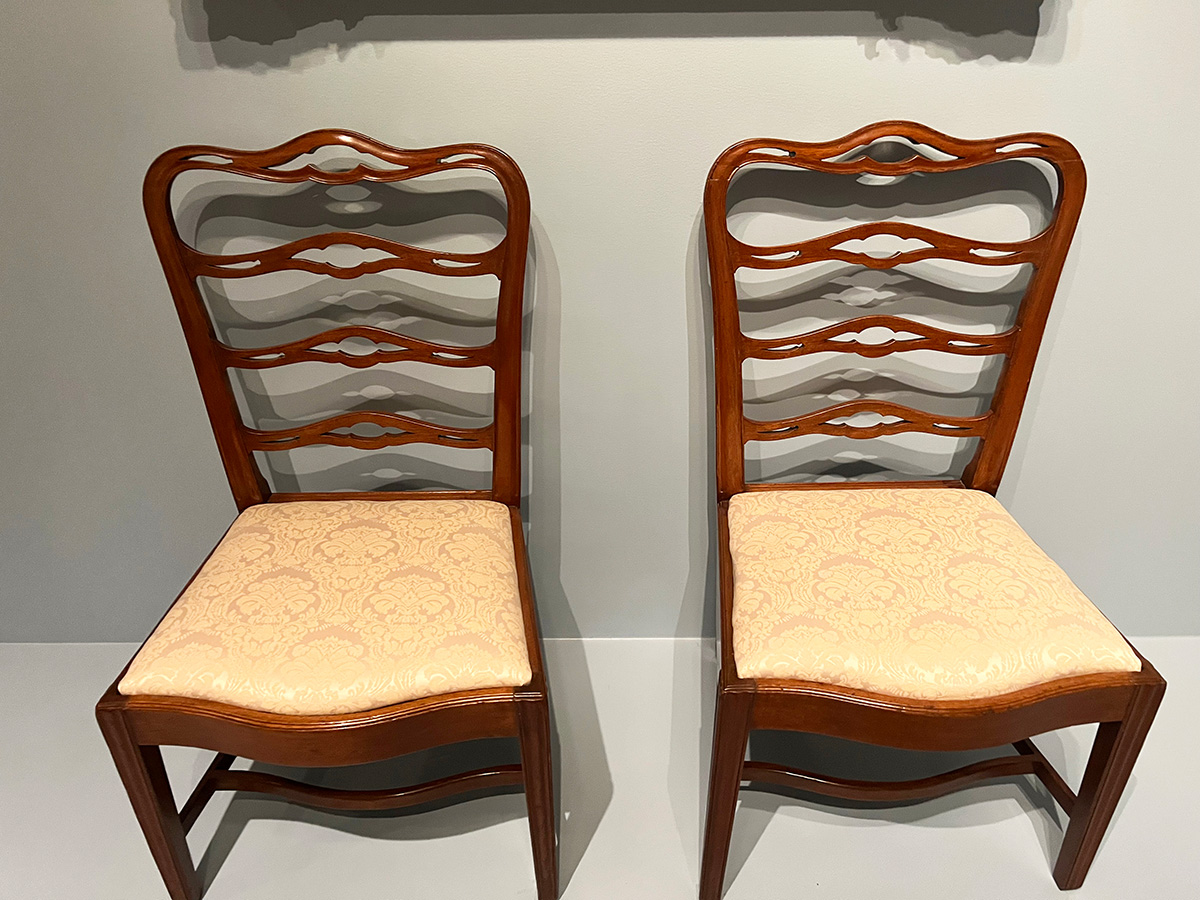
Figure 5: The chairs all finished with their new, un-sat-upon seats!
Slat-back chairs, circa 1760–1775, Philadelphia US, mahogany wood, reproduction upholstery, Lent by the National Society of the Colonial Dames of America in the State of Ohio, L86-87.1959
Related Blog Posts

Cincinnati, OH 45202
Toll Free: 1 (877) 472-4226
Museum Hours
Museum Shop
Terrace Café
Library
Cincinnati Art Museum is supported by the tens of thousands of people who give generously to the annual ArtsWave Campaign, the region's primary source for arts funding.

Free general admission to the Cincinnati Art Museum is made possible by a gift from the Rosenthal Family Foundation. Exhibition pricing may vary. Parking at the Cincinnati Art Museum is free.
Generous support for our extended Thursday hours is provided by Art Bridges Foundation’s Access for All program.

General operating support provided by:



